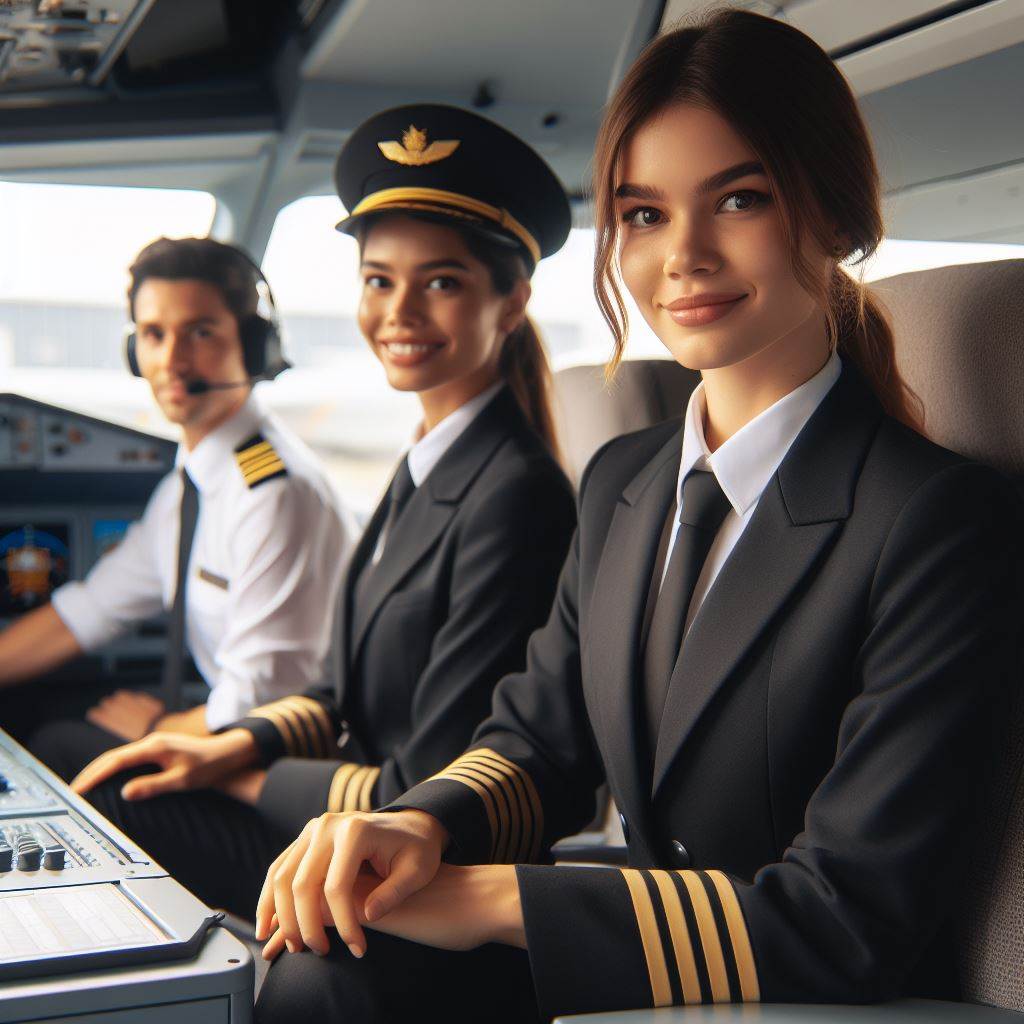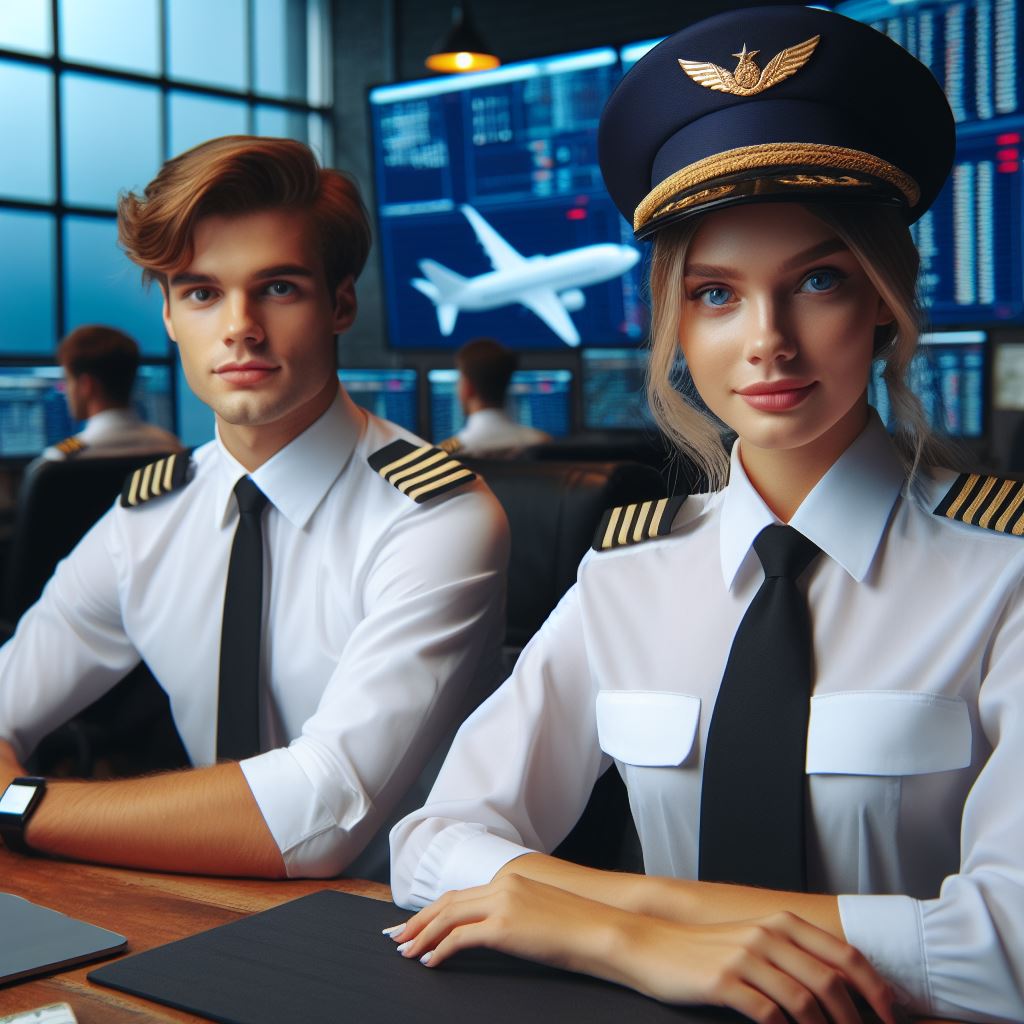Introduction
In this introductory segment, we embark on a journey into the vibrant realm of the Australian airline industry, a multifaceted arena characterized by innovation, competition, and continual evolution.
As one of the cornerstones of the nation’s transportation infrastructure, the Australian airline industry serves as a vital conduit for connectivity, facilitating both domestic and international travel with efficiency and reliability.
Within this dynamic landscape, various factors shape the trajectory of the industry, from technological advancements and regulatory frameworks to shifting consumer preferences and global economic trends.
Against this backdrop of change, stakeholders within the industry continually adapt, seeking innovative strategies to enhance operational efficiency, improve customer experience, and ensure sustainable growth.
Against this backdrop, the purpose of this blog post emerges: to delve into the intricate web of trends and transformations sweeping across the Australian airline industry.
Through insightful analysis and informed commentary, we aim to dissect the forces driving change within the sector, shedding light on emerging opportunities, challenges, and strategies for navigating the ever-evolving landscape.
By examining key developments, exploring industry dynamics, and engaging in forward-looking discourse, we endeavor to provide readers with a comprehensive understanding of the Australian airline industry’s present state and future trajectory.
Whether you’re a seasoned industry professional, an aspiring aviation enthusiast, or simply intrigued by the complexities of modern air travel, join us as we embark on this illuminating exploration of one of Australia’s most dynamic and influential sectors.
Overview of the Australian Airline Industry
In recent years, the Australian airline industry has experienced significant trends and changes, shaping its current state and future prospects.
Current State of the Industry in Australia
- The Australian airline industry is highly competitive, with both domestic and international carriers operating in the market.
- Passenger demand has been steadily increasing, driven by factors such as lower airfares, population growth, and improved connectivity.
- Despite facing challenges like volatile fuel prices and regulatory constraints, the industry has shown resilience and adapted to changing market dynamics.
- Several airlines have reported strong financial performance, indicating the industry’s profitability and growth potential.
Major Players and Key Airlines Operating in the Country
Qantas, Australia’s premier carrier, dominates as the largest airline.
Virgin Australia competes vigorously, handling both domestic and global routes.
Jetstar, a Qantas subsidiary, excels in budget-friendly domestic and short-haul flights.
Rex Airlines focuses on remote Australian destinations, while Tigerair Australia, another budget carrier, emphasizes leisure travel.
Beyond these major players, smaller regional airlines, charter operators, and international carriers serve the Australian market.
Intense competition prevails, driven by pricing, service, network coverage, and loyalty programs.
Airlines constantly innovate to gain a competitive edge.
Recent industry shifts involve acquisitions, alliances, and expanded routes, shaping a dynamic landscape.
Addressing environmental concerns, airlines adopt fuel-efficient aircraft and carbon offset programs to reduce their carbon footprint.
The COVID-19 pandemic profoundly impacted the Australian airline industry, prompting travel restrictions and reduced demand.
Facing unprecedented challenges, airlines had to make tough survival decisions.
As recovery unfolds, opportunities for innovation emerge, with a focus on digitalization, automation, and enhancing the passenger experience.
The industry’s future hinges on factors like emerging technologies, evolving consumer preferences, government policies, and global economic conditions.
In summary, the Australian airline industry adapts to trends and challenges, striving to provide safe, affordable, and convenient air travel for domestic and international passengers.
Recent Trends in the Australian Airline Industry
The Australian airline industry has witnessed several significant trends and changes in recent years. These developments have been driven by increased competition, technological advancements, and changing consumer preferences.
Additionally, the rise of low-cost carriers has had a profound impact on the industry, leading to the emergence of budget airlines and their effects on traditional full-service airlines.
Increased Competition
- Airline industry in Australia has experienced a surge in competition over the past decade.
- New players and existing airlines have been vying for a larger market share.
- This heightened competition has led to lower airfares and increased options for travelers.
Technological Advancements
- Advancements in technology have had a profound impact on the Australian airline industry.
- Online booking systems have made it easier for consumers to compare and book flights.
- Mobile applications and self-service kiosks have streamlined the check-in process.
- Improved inflight entertainment systems have enhanced the overall passenger experience.
Changing Consumer Preferences
- Consumer preferences have evolved to prioritize convenience, affordability, and personalized experiences.
- Travelers now expect seamless and hassle-free air travel experiences.
- Increased demand for sustainable travel has prompted airlines to adopt eco-friendly practices.
- Passengers are also seeking unique and immersive travel experiences, driving airline partnerships with tourism boards.
Impact of Low-cost Carriers
- The advent of low-cost carriers has revolutionized the Australian airline industry.
- LCCs offer competitive fares and minimalist services, appealing to price-conscious travelers.
- Qantas’ subsidiary, Jetstar, and Virgin Australia’s low-cost carrier, Tigerair, have gained significant market share.
- LCCs have forced full-service airlines to adapt and offer more affordable ticket options.
Rise of Budget Airlines
- Budget airlines have seen significant growth in Australia, catering to price-sensitive travelers.
- Airline companies like AirAsia X and Scoot have entered the Australian market, offering international flights at lower costs.
- Budget airlines have disrupted the dominance of traditional full-service carriers.
- They have prompted full-service airlines to introduce budget subsidiaries to remain competitive.
Effects on Traditional Full-service Airlines
- The rise of low-cost and budget airlines has impacted traditional full-service carriers.
- Full-service airlines, like Qantas and Virgin Australia, have faced intensified competition.
- They have been compelled to review their business models and offer more competitive prices.
- Full-service airlines have also focused on enhancing their customer experience to retain loyal passengers.
In short, the Australian airline industry is experiencing dynamic trends and changes driven by increased competition, technological advancements, and shifting consumer preferences.
The emergence of low-cost carriers and budget airlines has had a profound impact, forcing traditional full-service airlines to adapt and innovate. The industry will continue to evolve as airlines strive to meet the changing demands of travelers and maintain their market share.
Environmental Sustainability in the Airline Industry
As concerns about the environment continue to grow, the airline industry is facing increasing pressure to prioritize environmental sustainability.
Here, we will discuss the growing importance of environmental sustainability in the industry, highlight efforts made by Australian airlines to reduce their carbon footprint, and talk about the challenges and opportunities they face in adopting sustainable practices.
Importance of Environmental Sustainability in the Industry
- The airline industry has a significant impact on the environment, mainly due to carbon emissions.
- As awareness of climate change and its consequences rises, passengers are demanding greener options.
- Environmental sustainability is not only a moral obligation but also a business imperative for airlines.
- Adopting sustainable practices allows airlines to reduce costs, attract eco-conscious customers, and gain a competitive advantage.
Efforts by Australian Airlines to Reduce their Carbon Footprint
- Qantas, Australia’s largest airline, aims to achieve net-zero carbon emissions by 2050.
- They have invested in more fuel-efficient aircraft and implemented measures to reduce fuel consumption.
- Qantas has also introduced voluntary passenger offset programs where customers can contribute to carbon offset projects.
- Virgin Australia, another major player, has committed to reducing carbon emissions by 50% by 2050.
- They have invested in more fuel-efficient aircraft and implemented recycling and waste reduction initiatives.
Challenges and Opportunities for Airlines
- One of the main challenges airlines face is the high cost of adopting sustainable practices.
- Investments in new, fuel-efficient aircraft and alternative fuel sources require significant capital.
- Another challenge is the limited availability of sustainable aviation fuel.
- However, advancements in technology are creating opportunities for airlines to reduce their environmental impact.
- Emerging technologies such as electric and hybrid aircraft show promise in achieving greener air travel.
To summarize, environmental sustainability is becoming increasingly important in the Australian airline industry.
Airlines are making efforts to reduce their carbon footprint through initiatives such as investing in fuel-efficient aircraft and implementing voluntary carbon offset programs.
However, challenges such as high costs and limited availability of sustainable aviation fuel need to be addressed.
With advancements in technology, airlines have opportunities to adopt more sustainable practices and contribute to a greener future.
Read: Impact of Tech on Train Driving in Oz
Changes in Customer Experience
Airlines in Australia have undergone significant transformations in terms of customer experience and in-flight services. These changes aim to improve passengers’ comfort, satisfaction, and overall travel experience.
Exploring Changes in Customer Experience and In-Flight Services
- Introduction of Entertainment Systems: Australian airlines have introduced state-of-the-art entertainment systems, offering passengers a wide variety of movies, TV shows, music, and games to choose from.
- Enhanced Connectivity: In-flight Wi-Fi services have become increasingly prevalent, allowing passengers to stay connected, access the internet, and communicate with their loved ones or work during their flight.
- Improved Seat Comfort: Airlines have invested in more comfortable seats with additional legroom, adjustable headrests, and better reclining options.
- Health and Well-being: Airlines are providing healthier meal options, including vegetarian and gluten-free choices, catering to passengers with specific dietary requirements.
Increasing Adoption of Technology to Enhance the Passenger Experience
- Mobile Apps for Seamless Travel: Australian airlines have developed mobile apps that enable passengers to check-in, receive real-time flight updates, and access their boarding passes digitally.
- Automated Bag Drop: To streamline the check-in process, airlines have introduced automated bag drop machines, reducing waiting times and improving efficiency.
- Biometric Identification: Some airlines are testing facial recognition technology, allowing passengers to go through security and boarding processes with minimal manual intervention.
- Virtual Reality Experiences: Airlines are exploring the use of virtual reality to offer passengers immersive experiences during their flights, such as virtual tours or interactive entertainment.
Shift Towards Personalized Services and Tailored Experiences
- Customized In-Flight Services: Australian airlines are moving towards providing personalized services, allowing passengers to tailor their in-flight experience based on their preferences.
- Personalized Loyalty Programs: Airlines are revamping their loyalty programs to offer tailored rewards and perks to frequent flyers, based on their individual travel patterns and preferences.
- Emphasis on Customer Feedback: Airlines actively seek customer feedback to improve their services continually. Passengers’ suggestions and complaints are taken into consideration for future enhancements.
- Individualized Interactions: Crew members are trained to engage with passengers in a more personalized manner, addressing them by name and providing personalized recommendations and assistance.
In a nutshell, Australian airlines have witnessed significant changes in customer experience, leveraging technology and personalization to enhance passengers’ satisfaction.
These transformations reflect the industry’s commitment to ensuring a memorable, comfortable, and tailored travel experience for every passenger.
Read: How to Become a Train Driver in Australia

Government Regulations and Policies
In the Australian airline industry, government regulations and policies play a crucial role in shaping the operations and profitability of airlines.
These regulations aim to promote competition, protect consumer rights, and ensure the safety and security of air travel. Let’s delve into how these regulations have impacted the industry.
Impact of Government Regulations and Policies
The Australian government has implemented several regulations and policies that have significantly influenced the airline industry. These measures include:
- Restrictions on foreign ownership: The government limits the level of foreign ownership in domestic airlines to promote Australian control and influence over the industry.
- Route restrictions: Government regulations dictate the routes that airlines can operate on, which affects competition and market access for airlines.
- Safety and security regulations: The government imposes strict safety and security measures to ensure the well-being of passengers and maintain the credibility of the industry.
- Environmental regulations: To address climate change concerns, the government introduces policies to reduce greenhouse gas emissions and encourage sustainable practices.
Changes in Regulations and Their Impact
Over the years, there have been significant changes in regulations that have influenced the airline industry in various ways:
- Deregulation: During the 1990s, the Australian airline industry underwent deregulation, which led to increased competition, lower fares, and more choices for consumers.
- Open skies agreement: Australia has entered into open skies agreements with several countries, liberalizing international air travel and promoting market access for airlines.
- Airline licensing: The government has implemented stricter licensing requirements to ensure the financial viability and operational efficiency of airlines.
- Consumer protection: The government has introduced policies to protect consumer rights, including measures to address unfair contract terms, improve baggage handling, and enhance passenger compensation.
These changes in regulations have had a profound impact on the operations and profitability of airlines:
Your Personalized Career Strategy
Unlock your potential with tailored career consulting. Get clear, actionable steps designed for your success. Start now!
Get Started- Increased competition: Deregulation and open skies agreements have intensified competition, forcing airlines to seek cost savings, improve efficiency, and provide better services to attract customers.
- Cost pressures: Airlines have faced increasing cost pressures due to safety and security regulations, environmental compliance, and volatile fuel prices.
- Industry consolidation: The changes in regulations have led to industry consolidation, with larger airlines acquiring smaller competitors to achieve economies of scale and enhance market dominance.
- Customer benefits: Consumer protection policies have provided passengers with increased rights, leading to improved service quality and compensation in case of flight disruptions or mishandled baggage.
Government’s Role in Promoting Competition and Protecting Consumer Rights
The Australian government plays a vital role in promoting competition and protecting consumer rights in the airline industry through:
- Maintaining a level playing field: The government ensures fair competition by implementing and enforcing regulations to prevent anti-competitive behavior and market abuses.
- Implementing pricing regulations: Price regulations prevent airlines from engaging in predatory pricing or price gouging, ensuring reasonable fares for consumers.
- Monitoring industry practices: The government closely monitors the industry to identify and address any unfair or deceptive practices that may harm consumers.
- Enhancing consumer protection: The government introduces policies and regulations to safeguard consumer rights, including measures to address misleading advertising, improve transparency, and enable easy access to remedies.
Ultimately, government regulations and policies have significantly impacted the Australian airline industry, shaping its operations, profitability, and competitive landscape.
While these regulations aim to promote competition and protect consumer rights, airlines must navigate through changing regulatory environments to thrive in the dynamic industry.
Read: Day in the Life of an Aussie Train Driver
Learn More: Work-Life Balance in the Sky: Aus Crew Insights
See Related Content: Airline Pilot Unions: The Aussie Perspective
Future Outlook and Challenges
The Australian airline industry has faced numerous challenges in recent years, but the future outlook is promising. Despite the impact of COVID-19 and changing international travel restrictions, there are significant opportunities for growth and innovation.
Insights into the Future
Several factors will shape the future of the Australian airline industry. Firstly, the rapid advancement of technology will revolutionize the way airlines operate. Automation, artificial intelligence, and data analytics will improve efficiency and enhance the passenger experience.
Additionally, there is a growing focus on sustainability and environmental responsibility. Airlines are working towards reducing their carbon footprint by investing in fuel-efficient aircraft and adopting more sustainable practices.
This shift towards sustainability will not only benefit the environment but also attract environmentally conscious travelers.
Furthermore, the emergence of low-cost carriers and the increasing popularity of budget travel will drive competition and influence the future of the industry.
Low-cost carriers have disrupted the market by offering affordable fares, forcing traditional airlines to reevaluate their pricing strategies and improve cost efficiency.
Challenges and Opportunities
Despite the positive outlook, the Australian airline industry also faces significant challenges. The COVID-19 pandemic has caused unprecedented disruptions, with travel restrictions and lockdowns impacting the industry’s profitability.
However, this crisis has also provided an opportunity for innovation and adaptation.
Airlines need to prioritize health and safety measures to regain passenger trust and confidence. Implementing stringent hygiene protocols, ensuring social distancing, and investing in advanced air filtration systems will be crucial in the post-pandemic era.
Another challenge is the constantly changing international travel restrictions. Governments worldwide are implementing various measures to control the spread of COVID-19, including mandatory quarantine and border closures.
Airlines must closely monitor these restrictions and adjust their operations accordingly to minimize disruptions and accommodate changing travel demands.
Despite these challenges, there are exciting opportunities on the horizon. The Australian government’s support for domestic tourism and initiatives such as the trans-Tasman travel bubble will contribute to the industry’s recovery.
The resumption of international travel, albeit gradual, will further boost airlines’ revenue and allow them to expand their networks.
Emerging Trends
COVID-19 has accelerated several trends that will continue to shape the future of the Australian airline industry. Firstly, there will be an increased emphasis on hygiene and health precautions, including contactless check-ins and enhanced sanitization procedures.
Stand Out with a Resume That Gets Results
Your career is worth more than a generic template. Let us craft a resume and cover letter that showcase your unique strengths and help you secure that dream job.
Get HiredSecondly, the adoption of digital technologies will become even more prevalent.
From online booking platforms to mobile apps that offer personalized travel experiences, airlines need to stay at the forefront of technology to meet customer expectations and streamline their operations.
Furthermore, the rise of remote work and virtual meetings may impact business travel in the long term. As companies adopt flexible work arrangements, the demand for business trips may decrease, prompting airlines to diversify their target markets and focus on leisure travelers.
In summary, the future of the Australian airline industry is filled with opportunities and challenges. Capitalizing on emerging trends, prioritizing health and safety measures, and embracing innovation will be key to sustaining growth and profitability in this dynamic industry.
Read: Trucker Tales: Stories from the Road
Conclusion
In closing, this blog post has highlighted several key trends and changes in the Australian airline industry.
We discussed the rise of low-cost carriers, the impact of digital technology, and the growing importance of sustainability.
These developments are reshaping the industry and providing new opportunities for both airlines and passengers.
It is clear that the Australian airline industry is evolving rapidly, and staying informed about these changes is crucial.
Passengers should keep abreast of new routes, competitive pricing, and technology advancements to make the most of their travel experiences.
Additionally, airline operators must adapt their strategies to meet the changing demands of travelers while also considering sustainability practices.
As the industry continues to evolve, it is essential for both passengers and industry professionals to stay informed and adaptable.
The Australian airline industry is becoming more competitive and innovative, offering exciting prospects for both leisure and business travelers.
Embracing the trends and changes can lead to improved experiences and sustainable growth for the industry as a whole.
So, whether you are a frequent flyer or simply interested in the aviation world, remember to keep yourself updated with the latest news and developments in the Australian airline industry.
By doing so, you can make more informed decisions and benefit from the evolving landscape of air travel in this dynamic nation.




